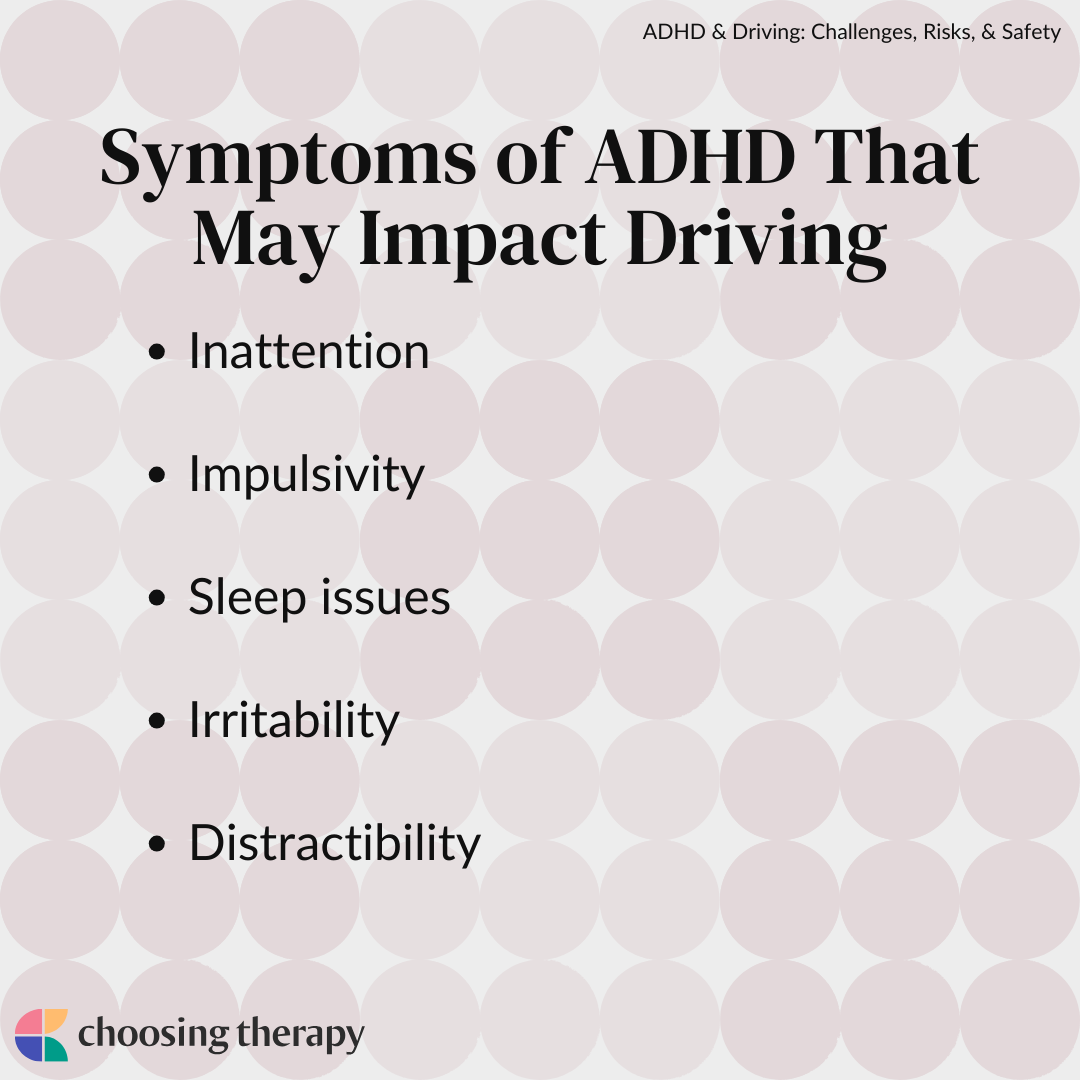ADHD And Driving: Research-Based Strategies For Safer Driving

Table of Contents
Understanding the Challenges of ADHD and Driving
Individuals with ADHD often face specific difficulties when driving, stemming from core symptoms of the condition. These challenges can significantly increase the risk of accidents and make everyday driving more stressful. Understanding these challenges is the first step towards developing effective coping mechanisms.
-
Difficulty maintaining attention on the road: Inattention is a hallmark of ADHD, making it difficult to consistently focus on driving tasks like maintaining speed, observing traffic signals, and checking mirrors. This can lead to near misses and accidents.
-
Impulsive lane changes or reactions: Impulsivity, another key symptom, can manifest as sudden lane changes without proper signaling, abrupt braking, or hasty reactions to other drivers. These impulsive actions increase the risk of collisions.
-
Problems with speed control and following distance: Difficulty regulating speed and maintaining a safe following distance are common. This can be particularly dangerous in high-traffic situations or on highways.
-
Increased risk of accidents due to distracted driving: While distractions affect all drivers, individuals with ADHD may struggle more to filter out irrelevant stimuli, leading to increased vulnerability to distracted driving incidents.
-
Challenges with route planning and navigation: Planning a route and navigating unfamiliar areas can be more challenging for those with ADHD, potentially leading to delays, stress, and increased risk of getting lost.
These ADHD driving difficulties highlight the need for proactive strategies to mitigate these risks and enhance road safety. Understanding the specific challenges of ADHD and road safety is crucial for developing effective solutions.
Practical Strategies for Safer Driving with ADHD
Implementing practical strategies can significantly improve driving safety for individuals with ADHD. These strategies address both the underlying neurological challenges and the practical aspects of driving.
Medication Management
Medication plays a crucial role for many individuals with ADHD. Stimulant and non-stimulant medications can help improve focus, reduce impulsivity, and enhance self-control – all vital for safe driving. However, it's crucial to discuss medication options and potential side effects with a doctor.
-
Consistent medication adherence improves focus and impulse control: Maintaining a consistent medication regimen is key to experiencing the full benefits for driving.
-
Discuss potential side effects and their impact on driving: Some medications might cause drowsiness or other side effects that could impair driving ability. Open communication with your healthcare provider is essential to manage these side effects effectively.
-
Emphasize the need for open communication with healthcare providers: Regularly discussing medication effectiveness and side effects with your doctor ensures optimal management and safe driving.
Behavioral Strategies for Improved Focus
Behavioral strategies focus on enhancing concentration and minimizing distractions while driving. These techniques can be particularly helpful in supplementing medication or for individuals who prefer non-pharmacological approaches.
-
Minimize distractions (e.g., phone use, loud music): Avoid using mobile phones, and keep music and other audio at a volume that doesn't interfere with your concentration on the road.
-
Practice mindfulness and deep breathing exercises before driving: Mindfulness techniques can help improve focus and reduce anxiety, making driving a more manageable experience.
-
Break down long drives into shorter segments with rest stops: Avoid fatigue by taking regular breaks to stretch, walk around, and rest. Fatigue significantly exacerbates ADHD symptoms.
-
Use driving apps with voice-activated navigation: Hands-free navigation minimizes distractions and helps with route planning.
-
Employ visual cues to maintain lane position and awareness: Consciously focusing on visual cues like lane markings can help maintain attention and lane positioning.
Vehicle Modifications and Adaptive Driving Techniques
Technological advancements and vehicle modifications can significantly assist individuals with ADHD in driving safely.
-
Lane keeping assist systems: These systems provide alerts and even steering assistance to help maintain lane position, mitigating the risk of drifting.
-
Adaptive cruise control: This feature helps maintain a safe following distance, reducing the likelihood of rear-end collisions.
-
Rearview camera systems: Improved visibility enhances awareness of surroundings, especially when backing up or changing lanes.
-
Adjusting driving habits, like choosing less congested routes: Opting for less busy routes can minimize the stress and demands of driving in heavy traffic.
Seeking Professional Support and Resources
Seeking professional support is crucial for individuals with ADHD who are struggling with driving. Various professionals and resources can offer guidance and support.
-
Occupational therapists can assess driving skills and suggest adaptive strategies: OTs can provide personalized recommendations for improving driving skills and adapting to individual needs.
-
Driving rehabilitation programs can provide specialized training and support: These programs offer tailored instruction and practice to improve driving abilities.
-
Support groups offer a sense of community and shared experiences: Connecting with others facing similar challenges can provide emotional support and practical advice.
Conclusion
Driving safely with ADHD requires a multi-faceted approach encompassing medication management, behavioral strategies, vehicle adaptations, and professional support. By implementing these research-based strategies, individuals with ADHD can significantly reduce their driving risks and improve their overall safety on the road. Remember, safe driving with ADHD is achievable with the right approach. Take control of your driving safety! Learn more about managing ADHD and driving effectively by exploring additional resources and seeking professional guidance.

Featured Posts
-
 Remembering Fallen Soldiers A Candlelight Vigil At Fort Belvoir
Apr 29, 2025
Remembering Fallen Soldiers A Candlelight Vigil At Fort Belvoir
Apr 29, 2025 -
 Johnny Damon Sides With Trump Advocates For Pete Roses Hall Of Fame Induction
Apr 29, 2025
Johnny Damon Sides With Trump Advocates For Pete Roses Hall Of Fame Induction
Apr 29, 2025 -
 Senior Citizens And You Tube A New Generation Of Viewers
Apr 29, 2025
Senior Citizens And You Tube A New Generation Of Viewers
Apr 29, 2025 -
 Stock Market Valuations Bof As Reassuring Analysis For Investors
Apr 29, 2025
Stock Market Valuations Bof As Reassuring Analysis For Investors
Apr 29, 2025 -
 Willie Nelsons 154th Studio Album Oh What A Beautiful World
Apr 29, 2025
Willie Nelsons 154th Studio Album Oh What A Beautiful World
Apr 29, 2025
